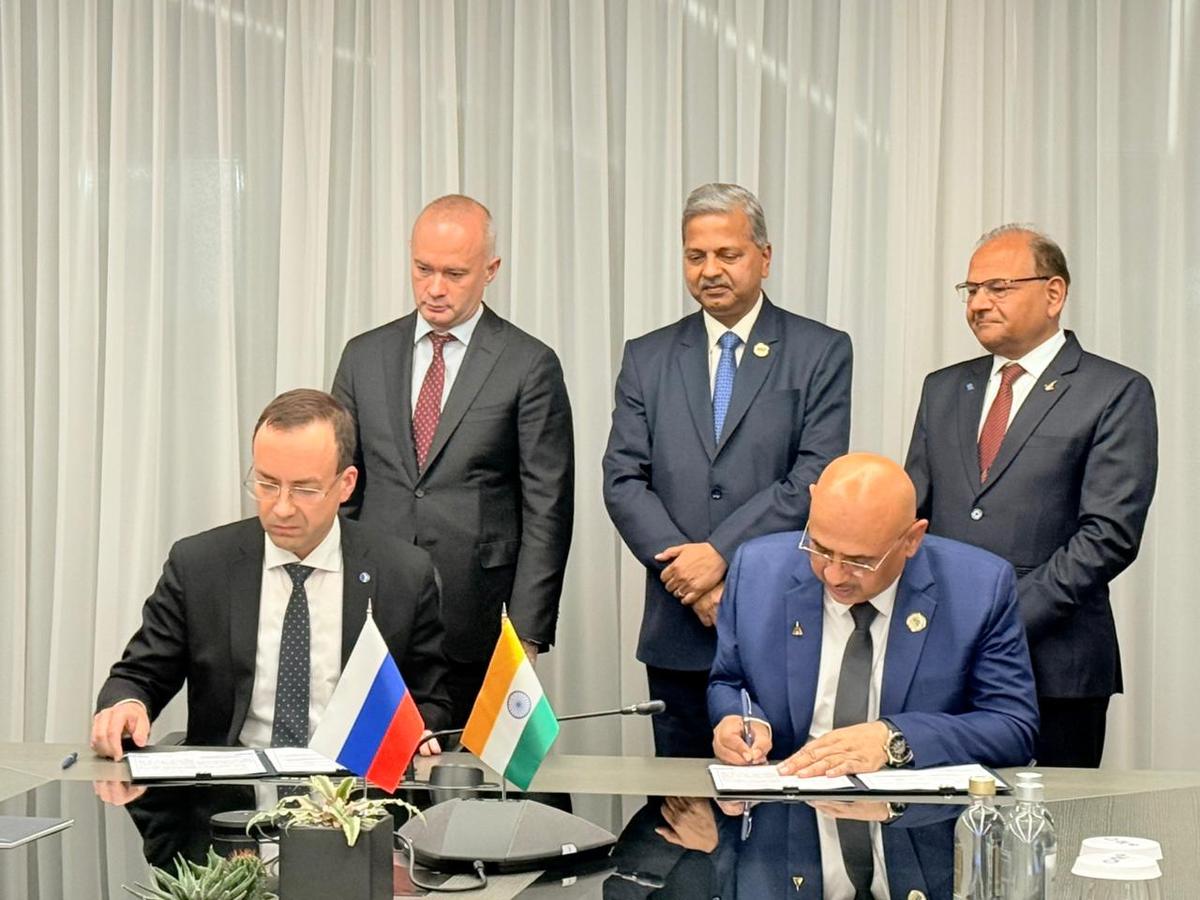HAL-Russia Pact for SJ-100 Aircraft
HAL signs MoU with Russia’s United Aircraft Corporation (UAC) to jointly produce the SJ-100 passenger aircraft, boosting Make in India, regional connectivity, and aerospace self-reliance while navigating strategic autonomy in global geopolitics.
HAL–Russia SJ-100 Aircraft MoU: Strategic, Economic, and Geopolitical Impact
Context:
Hindustan Aeronautics Limited (HAL) has signed a significant Memorandum of Understanding (MoU) with Russia’s United Aircraft Corporation (UAC) for the joint production of the civil commuter aircraft, the SJ-100. This collaboration marks a landmark step in India’s civil aviation manufacturing capability and aligns with the Government’s long-term vision of self-reliance under the Make in India and Atmanirbhar Bharat initiatives.

What is the significance of the SJ-100 project?
1. Boosting Indigenous Manufacturing
This project will be the first complete passenger aircraft to be manufactured in India since the AVRO HS-748, which was produced between 1961 and 1988. The SJ-100 project represents a historic revival of indigenous aircraft manufacturing after nearly four decades. It signifies HAL’s entry into the civil aviation market, traditionally dominated by global players such as Boeing and Airbus. The partnership will strengthen India’s aerospace base, reduce dependency on foreign imports, and establish a self-reliant ecosystem capable of designing, assembling, and maintaining advanced aircraft domestically.
2. Enhancing Regional Connectivity
The SJ-100, a twin-engine, narrow-body passenger jet, is designed for short to medium-haul routes. It can carry around 75–100 passengers and is highly suited for regional routes under India’s UDAN (Ude Desh ka Aam Nagrik) scheme, which aims to enhance air connectivity for smaller towns and tier-2 cities. By manufacturing the SJ-100 locally, India can reduce costs, increase availability, and improve access to modern aircraft for regional airlines—directly supporting the government’s goal of democratising air travel.
3. Economic and Industrial Growth
The collaboration between HAL and UAC is expected to generate substantial economic and industrial benefits. It will create thousands of direct and indirect employment opportunities, stimulate the development of a domestic aerospace supply chain, and promote collaboration between public and private sector enterprises. The establishment of a manufacturing line for SJ-100 aircraft will also lead to skill development, technology transfer, and innovation in high-precision engineering, avionics, and materials technology—thereby strengthening India’s position in the global aerospace industry.
4. Addressing Market Demand
India’s civil aviation sector is among the fastest-growing in the world, with an estimated demand for more than 200 regional jets over the next decade. Additionally, the broader Indian Ocean region is expected to require around 350 similar aircraft within the same timeframe. Local production of the SJ-100 can cater to this growing demand effectively, ensuring faster delivery, cost savings, and after-sales support within the region.
How does this MoU impact India’s geopolitical and strategic landscape?
1. Testing the India–US Strategic Partnership
The United Aircraft Corporation is under extensive Western sanctions following Russia’s invasion of Ukraine. India’s decision to collaborate with a sanctioned entity adds a layer of diplomatic complexity. This move will be closely observed in Washington, as it tests India’s ability to maintain strategic partnerships with both the United States and Russia simultaneously. The agreement could draw scrutiny under the Countering America’s Adversaries Through Sanctions Act (CAATSA), though India has previously navigated similar issues in its defence purchases from Russia, including the S-400 missile system.
2. Reinforcing India–Russia Ties
The MoU reaffirms India’s long-standing defence and technological cooperation with Russia, extending this relationship into the civilian aerospace domain. It reflects India’s commitment to maintaining strong ties with Russia despite global pressures, guided by its principle of strategic independence. The project is expected to enhance technological exchange, deepen bilateral industrial collaboration, and diversify India’s strategic options.
3. Strategic Autonomy and Diversification
India’s participation in the SJ-100 project exemplifies its foreign policy principle of strategic autonomy—pursuing partnerships that align with national interests without aligning exclusively with any single power bloc. Furthermore, while India currently relies heavily on Western companies for commercial aircraft, this collaboration with Russia allows diversification and a move towards technological self-reliance.
Conclusion
The HAL–Russia pact for the SJ-100 aircraft represents a major leap in India’s aerospace self-reliance journey. It promises to revitalise domestic aircraft manufacturing, enhance regional air connectivity, and generate vast employment and technological growth opportunities. At the same time, it highlights India’s complex diplomatic balancing act—preserving relations with both the West and Russia while steadfastly prioritising its own national interests. If implemented effectively, the SJ-100 project could become a cornerstone for India’s entry into global civil aviation manufacturing, transforming its aviation landscape and reinforcing its vision of an Atmanirbhar Bharat in the skies.
Subscribe to our Youtube Channel for more Valuable Content – TheStudyias
Download the App to Subscribe to our Courses – Thestudyias
The Source’s Authority and Ownership of the Article is Claimed By THE STUDY IAS BY MANIKANT SINGH





